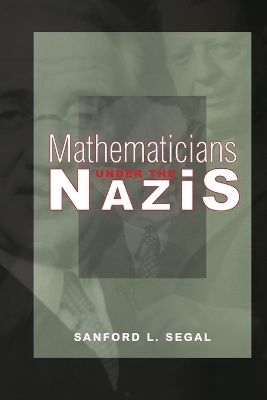
Mathematicians under the Nazis
Seiten
2014
Princeton University Press (Verlag)
978-0-691-16463-2 (ISBN)
Princeton University Press (Verlag)
978-0-691-16463-2 (ISBN)
Contrary to popular belief--and despite the expulsion, emigration, or death of many German mathematicians--substantial mathematics was produced in Germany during 1933-1945. In this landmark social history of the mathematics community in Nazi Germany, Sanford Segal examines how the Nazi years affected the personal and academic lives of those German mathematicians who continued to work in Germany. The effects of the Nazi regime on the lives of mathematicians ranged from limitations on foreign contact to power struggles that rattled entire institutions, from changed work patterns to military draft, deportation, and death. Based on extensive archival research, Mathematicians under the Nazis shows how these mathematicians, variously motivated, reacted to the period's intense political pressures. It details the consequences of their actions on their colleagues and on the practice and organs of German mathematics, including its curricula, institutions, and journals.
Throughout, Segal's focus is on the biographies of individuals, including mathematicians who resisted the injection of ideology into their profession, some who worked in concentration camps, and others (such as Ludwig Bieberbach) who used the "Aryanization" of their profession to further their own agendas. Some of the figures are no longer well known; others still tower over the field. All lived lives complicated by Nazi power. Presenting a wealth of previously unavailable information, this book is a large contribution to the history of mathematics--as well as a unique view of what it was like to live and work in Nazi Germany.
Throughout, Segal's focus is on the biographies of individuals, including mathematicians who resisted the injection of ideology into their profession, some who worked in concentration camps, and others (such as Ludwig Bieberbach) who used the "Aryanization" of their profession to further their own agendas. Some of the figures are no longer well known; others still tower over the field. All lived lives complicated by Nazi power. Presenting a wealth of previously unavailable information, this book is a large contribution to the history of mathematics--as well as a unique view of what it was like to live and work in Nazi Germany.
Sanford L. Segal is Professor of Mathematics at the University of Rochester and the author of Nine Introductions in Complex Analysis.
*Frontmatter, pg. i*Contents, pg. ix*PREFACE, pg. xi*ACKNOWLEDGMENTS, pg. xix*ABBREVIATIONS, pg. xxi*CHAPTER ONE. Why Mathematics?, pg. 1*CHAPTER TWO. The Crisis in Mathematics, pg. 14*CHAPTER THREE. The German Academic Crisis, pg. 42*CHAPTER FOUR. Three Mathematical Case Studies, pg. 85*CHAPTER FIVE. Academic Mathematical Life, pg. 168*CHAPTER SIX. Mathematical Institutions, pg. 229*CHAPTER SEVEN. Ludwig Bieberbach and "Deutsche Mathematik", pg. 334*CHAPTER EIGHT. Germans and Jews, pg. 419*APPENDIX, pg. 493*BIBLIOGRAPHY, pg. 509*INDEX, pg. 523
| Erscheint lt. Verlag | 23.11.2014 |
|---|---|
| Zusatzinfo | 20 halftones. |
| Verlagsort | New Jersey |
| Sprache | englisch |
| Maße | 152 x 235 mm |
| Gewicht | 851 g |
| Themenwelt | Geschichte ► Allgemeine Geschichte ► 1918 bis 1945 |
| Geisteswissenschaften ► Geschichte ► Regional- / Ländergeschichte | |
| Geschichte ► Teilgebiete der Geschichte ► Militärgeschichte | |
| Mathematik / Informatik ► Mathematik ► Geschichte der Mathematik | |
| Sozialwissenschaften ► Politik / Verwaltung ► Politische Systeme | |
| ISBN-10 | 0-691-16463-0 / 0691164630 |
| ISBN-13 | 978-0-691-16463-2 / 9780691164632 |
| Zustand | Neuware |
| Haben Sie eine Frage zum Produkt? |
Mehr entdecken
aus dem Bereich
aus dem Bereich
ein Psychologe erlebt das Konzentrationslager
Buch | Hardcover (2024)
Kösel (Verlag)
22,00 €
Mythos „Stauffenberg-Attentat“ – wie der 20. Juli 1944 verklärt und …
Buch | Hardcover (2024)
Goldmann (Verlag)
24,00 €


